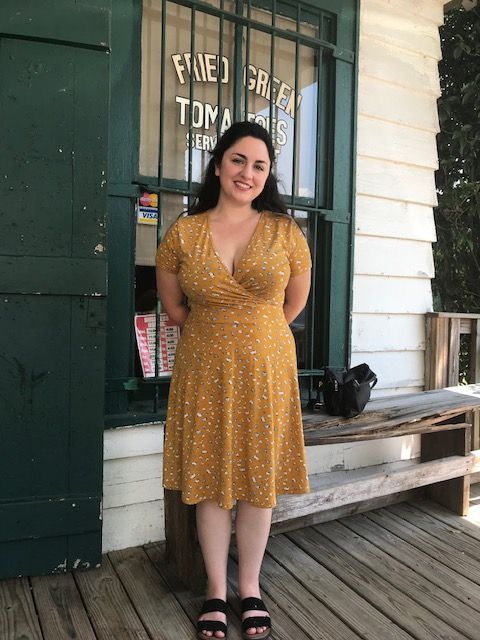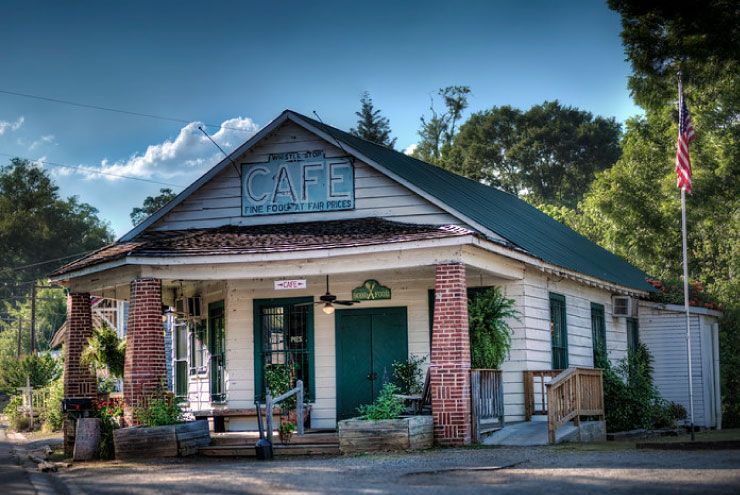By Dr. Laura McGuire
“It’s funny, most people can be around someone, and they gradually begin to love them and never know exactly when it happened; but Ruth knew the very second it happened to her. When Idgie had grinned at her and tried to hand her that jar of honey, all these feelings that she had been trying to hold back came flooding through her, and it was at that second in time that she knew she loved Idgie with all her heart.” ―Fannie Flagg, Fried Green Tomatoes at the Whistle Stop Cafe
I must have been around 13 years old the first time my mom showed me the film Fried Green Tomatoes. She said it was a film about fierce southern women working together to beat the odds and succeeding—something she knew a lot about. While my mom is a Yankee through and through, she married a southerner and lived in Tennessee for several years. She fell in love with the land and its history, an admiration reflected in her connection to southern stories. To her, Fried Green Tomatoes was a fun and empowering story about best friends and intergenerational mentorship. To me, even subconsciously as a young teen, it was a story of southern lesbian love.
I was just awakening to my queerness at age 13. I had been madly in love with my best friend since I was seven; I told her I wished we could get married one day. She was a tomboy blonde and everything my femme, brunette heart saw as the yang to my yin. She was charismatic and free-spirited; I was awkward and conformist. Where she was liberated, I was timid. But watching Fried Green Tomatoes, I saw our dynamic perfectly mirrored by the film’s main characters, Idgie and Ruth. Rough-around-the-edges Idgie couldn’t care less what the town’s folks think of her. She wears trousers (in the 1930s!) and refuses to marry. She lives everywhere and nowhere at the same time, charming bees and catching wild honey underneath the southern sunset. This makes Ruth love her endlessly, though she ultimately marries a man to please her family and fulfill her role as a good southern belle (as I once did too). But when her marriage turns abusive, Idgie not only saves her physically, she keeps her emotionally safe as well—together they start the Whistle Stop Café and Idgie raises Ruth’s son as her own.
In my twenties, a few years after I came out of the closet, I went on a date with a girl who was, in no exaggeration, obsessed with the film. She would wax–poetic about the characters, their love, and her desire to be the Idgie to a Ruth. This intrigued me to revisit the film, to rewatch it with new eyes as an adult. This time around, I saw so much more in the undertones of the story. The film was restricted in terms of depicting Idgie and Ruth’s relationship as explicitly romantic—it came out in the early 1990s—but it is there all the same. In fact, Fanny Flagg, the author of the book and screenplay, is a lesbian from Alabama.
At my friend’s advice, I read the book—Fried Green Tomatoes at the Whistle Stop Cafe—and found it to be the missing piece to the movie. The book is clear—Idgie and Ruth are madly in love. It is a true lesbian love story set in the South in a time, long before Pride or GSAs, when queer people existed in subtle tones and whispered glances.

Author Dr. Laura McGuire at the real-life Whistle Stop Café in Juliette, Georgia.
This past spring, I was driving through Georgia when I quite accidentally stumbled upon the town where the movie was filmed—Juliette, Georgia. I screamed as I exited the highway and realized that the turn for my hotel was the same one for the real-life Whistle Stop Café. The next morning I went right to the restaurant, where I was pleasantly surprised to see that the café is still exactly how it appeared in the film (including the mysterious Bennett’s BBQ). I sat at the counter and ate the best fried green tomatoes I have ever had, a feeling of pure bliss washing over me.
For most people, the film remains a story about best friends and resilience. For those of us who have read the book and understand the real story behind it, however, it means so much more. We see our experiences and history being realized, despite the outside world’s attempts to erase or sterilize us. We feel validated in the love we feel for our best friends, friends who also become lovers and who are with us through child rearing and sickness. Like Idgie and Ruth, we know what it means to be queer, southern, and in love.








Rachel Abbott
July 5, 2019 at 11:58 PMSuch a sweet story! I love this. 🙂